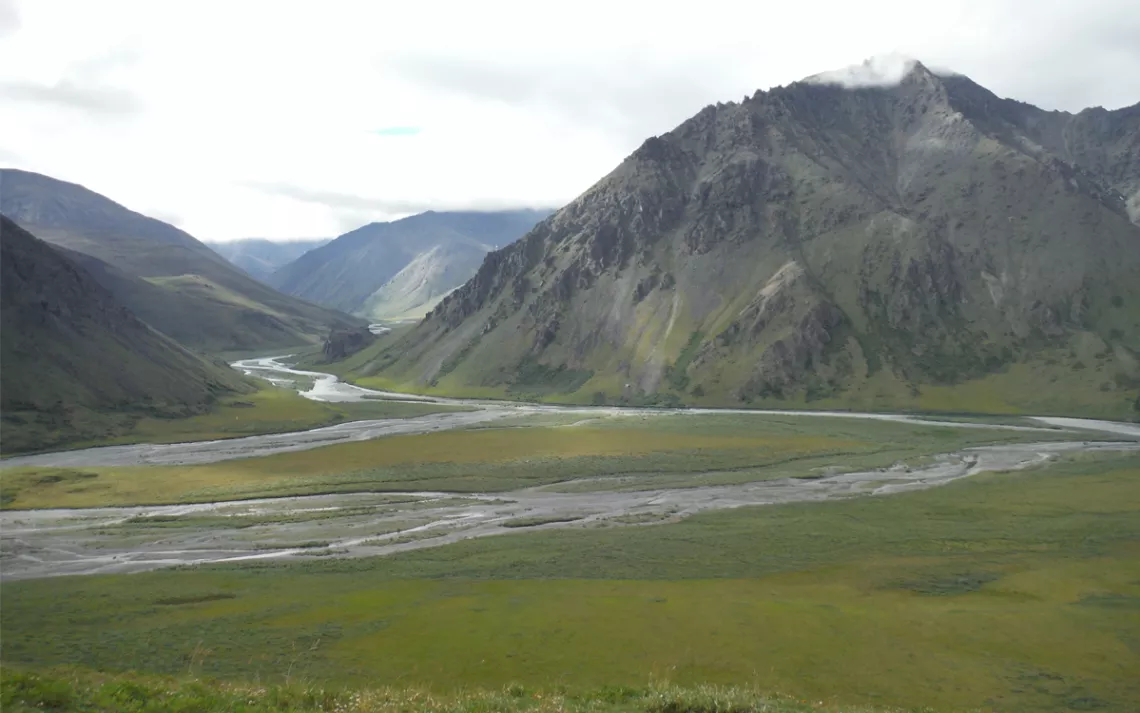Biden Administration Pauses Oil Exploration in the Arctic National Wildlife Refuge
Decision is temporary, as Congress must act to permanently protect the refuge

Photo by JeffDSamuels71/iStock
The Biden administration this week announced that it is suspending all activity related to the oil and gas leasing program in Alaska's Arctic National Wildlife Refuge to give the Department of Interior time to conduct a "new, comprehensive analysis" on the impacts of drilling in the fragile ecosystem.
Interior Secretary Deb Haaland laid out the basis for the pause, citing numerous legal deficiencies that the Trump administration failed to address when it created the Coastal Plain Oil and Gas Leasing Program. Chief among the critiques is an "insufficient analysis under the National Environmental Policy Act, including failure to adequately analyze a reasonable range of alternatives.”
The move follows President Biden’s executive order, issued on the first day of his presidency, that placed a temporary moratorium on all new oil and gas leasing on federal lands while the Department of Interior reviewed the program. With the new directive, Secretary Haaland is extending the pause "to determine whether the leases should be reaffirmed, voided, or subject to additional mitigation measures," states a press release on the notice.
Tuesday’s announcement represents a temporary victory for environmentalists, who have been eager to see bold action on climate change from the Biden administration, as well as for the Alaska Natives who have opposed fossil fuel extraction in the region. This week’s order, however, stops short of permanently protecting the area from oil and gas drilling. To do that, Congress needs to get rid of the leasing program altogether, says Mike Scott, senior campaign representative for the Sierra Club's Our Wild Alaska campaign.
"[The secretarial order] is a step in the right direction. And it does buy us really valuable time," Scott says. "I think if anything, what it does is raises the urgency for Congress to act on this."
As the largest protected area in the country, the 19-million-acre refuge is one of America's few remaining intact ecosystems. It is also home to some of North America's most iconic animals, including the polar bear, caribou, and wolverine.
The coastal plain of the Arctic Refuge is particularly important to the Gwich'in, who call the area “the sacred place where life begins” and rely on the area’s caribou herd for subsistence hunting. At nearly 200,000 strong, the Porcupine caribou herd is the largest free-roaming wildlife herd in the United States. The coastal plain that has been targeted for oil and gas development is the calving ground for the caribou, whose annual migration is one of the longest land migrations in the world.
Opening up this area to oil and gas exploration has been a contentious issue for nearly 40 years. The Trump administration scored a win in 2017 when Congress added a provision to the Tax Cuts and Jobs Act that carved out 1.5 million acres of land along the coast of the refuge for oil and gas leasing. The Department of Interior didn't announce the sale of leases until 2020. On January 19, just one day before President Biden was inaugurated, the Trump administration issued nine 10-year leases on half a million acres in the refuge.
When compared with the $1.8 billion that the Congressional Budget Office estimated the sale would deliver to federal coffers, the lease program was an epic failure. Only nine of the 22 tracts offered were bid on, and the majority of bids came from a state-owned public corporation called the Alaska Industrial Development and Export Authority. The authority paid a paltry $25 per acre. Meanwhile, two other tracts were individually leased to a pair of small oil exploration companies. The total sale brought in $15 million, woefully under target for what was projected.
The low numbers were largely due to large banks’ and oil companies’ lack of interest in developing the area. Nearly 30 banks around the world, including all six major US banks, have pledged not to fund drilling in the Arctic. Their disinterest in financing Arctic oil extraction represents a shift in thinking that suggests large corporations are starting to factor climate change into their bottom lines.
There are significant risks involved with drilling in the Arctic. Iceberg accidents and oil spills can cost companies lots of money and devastate ecosystems. The 1989 Exxon Valdez oil spill off the southern coast of Alaska cost Exxon $7 billion and killed 250,000 seabirds and thousands of marine animals, including otters and seals. The risks are enough to dissuade some companies from investing in the area and have forced others to abandon projects. In 2012, for example, BP decided to pull out of a project in the Beaufort Sea due to potential dangers and cost. Continued oil and gas extraction is accelerating climate change, a particularly acute factor in the Arctic, where temperatures are rising twice as fast as in other parts of the world.
For the First Nations peoples who call the area home, a moratorium on drilling in the area is just the right thing to do. “The Gwich’in Nation is grateful and heartened by the news that the Biden administration has acted again on its commitment to protecting sacred lands and the Gwich’in way of life,” said Bernadette Demientieff, executive director of the Gwich’in Steering Committee, in a press statement. “After fighting so hard to protect these lands and the Porcupine caribou herd, trusting the guidance of our ancestors and elders, and the allyship of people around the world, we can now look for further action by the administration and Congress to repeal the leasing program.”
 The Magazine of The Sierra Club
The Magazine of The Sierra Club



